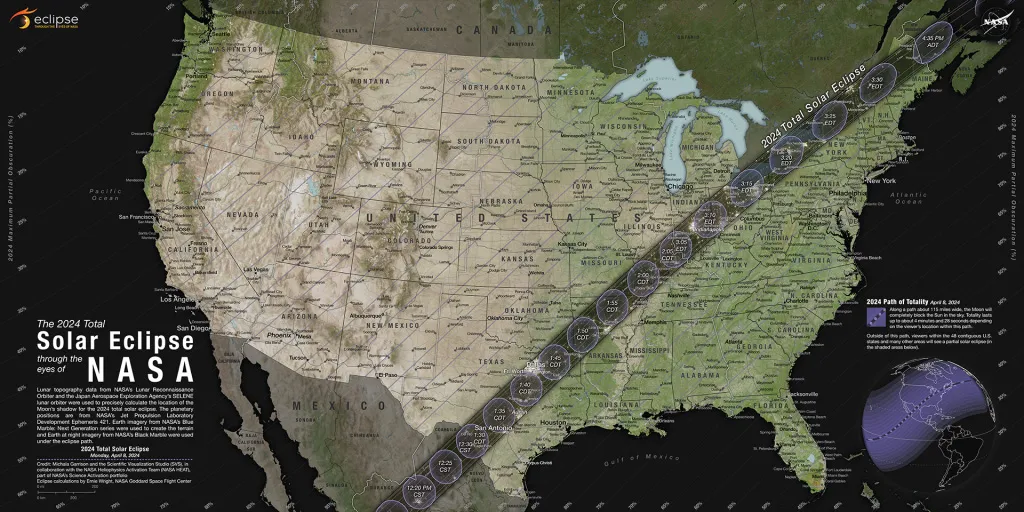Monday, April 8, 2024, marks the first total solar eclipse to grace North American skies since the early aughts. Not everyone in North America will get the chance to see the “The Great North American Eclipse.”
The cosmic event, during which the moon will pass in front of the sun, will be visible up to 120 miles away from the projected path of totality, but only a lucky few (around 31.6 million) will get to see the awe-inspiring total blackout of the eclipse.
What is the path of totality for the 2024 Solar Eclipse?

2024’s total solar eclipse will “touch ground” just off of Mexico’s Pacific coast at around 11:07 am before making its way through central Texas. Major Metropolitan areas like Austin, Waco, and San Antonio fall in the fringe of the eclipse, and while the visuals could certainly put the fear of the unknown into our ancestors, they won’t be nearly as impressive as the views from Dallas, TX.
The eclipse will then continue over the following states before passing over the Canadian provinces of Ontario, Nova Scotia, and New Brunswick.
NASA has created an interactive map, the Eclipse Explorer to help eager viewers determine the exact time the solar eclipse will grace the skies over your home or place of work.
The Path of Totality falls over these U.S. states, in timeline order:
- Texas
- Oklahoma
- Arkansas
- Missouri
- Illinois
- Kentucky
- Indiana
- Ohio
- Pennsylvania
- New York
- Vermont
- New Hampshire
- Maine
In addition to those listed, portions of both Tennessee and Michigan will see the effects of the eclipse.
In order to properly enjoy the eclipse, viewers will need proper eye protection. If your local stores shelves have been picked clean, we’ve got you covered with a DIY alternative.
If you didn’t manage to snag the time off to see 2024’s total solar eclipse, there is still hope. The next heavenly event will grace North American shores in October 2044, this time centered on the West Coast and Western states like Nevada, Arizona, and Utah.











Published: Apr 8, 2024 11:13 am